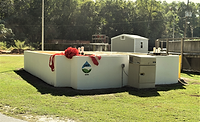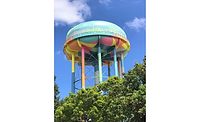Sherwin-Williams Unveils Winners of 2021 Water and Wastewater Impact Award

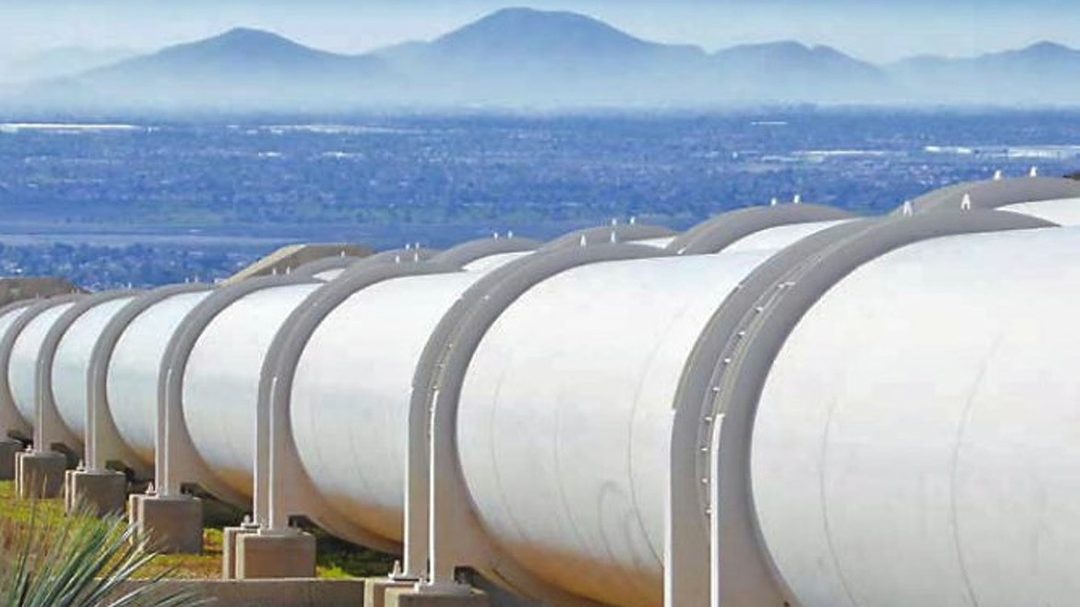
The penstock for the Devil Canyon Powerplant in San Bernardino, California.
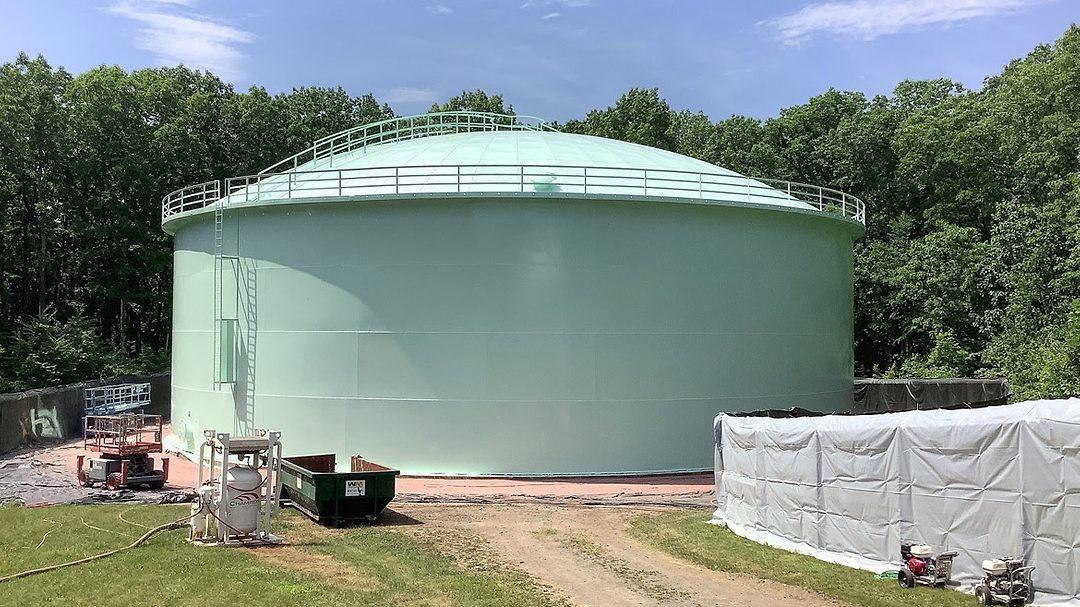
The water tank of Holyoke Waterworks in Holyoke, Massachusetts.
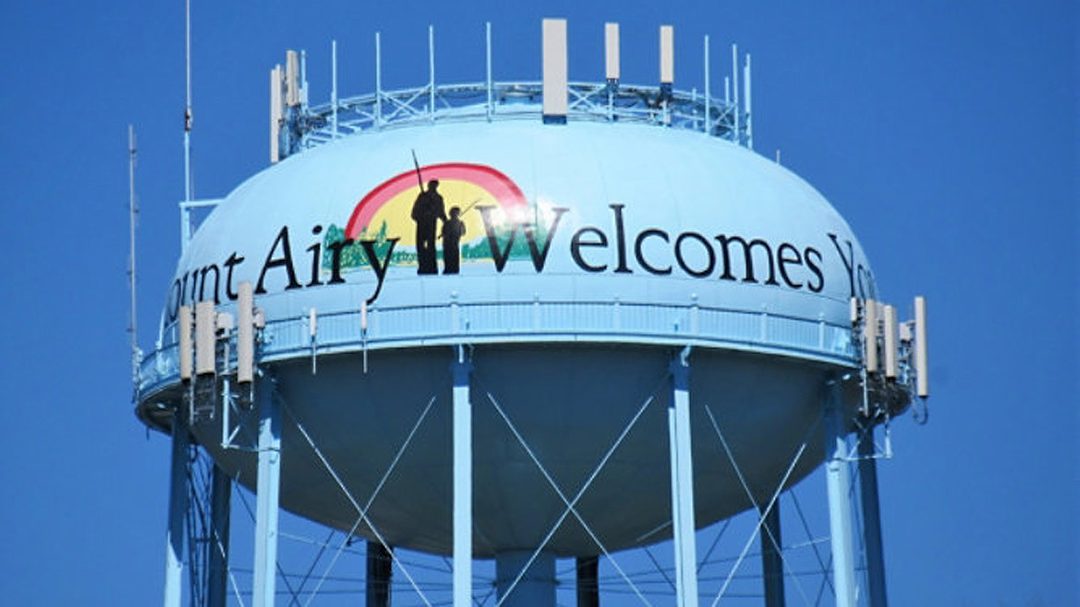
The water tower in Mt Airy, North Carolina.




CLEVELAND – Sherwin-Williams announced that a project team braving tight quarters, steep vertical drops and an aggressive coatings schedule to reline an 8- to 9.5-foot-diameter, 1.3-mile-long penstock for the Devil Canyon Powerplant in San Bernardino, California, has earned top honors in the 2021 Sherwin-Williams Impact Award program. The Impact Award recognizes exceptional projects that feature high-performance coating and lining materials from Sherwin-Williams Protective & Marine. The challenging, multi-year project involved blasting and relining the penstock’s entire interior while navigating grades of nearly 75% in spots, figuring out how to manage equipment access via 30-inch wide entry points located 1,000 feet apart and maintaining warmth inside the pipeline when outside temperatures were near freezing and winds occasionally reached 70 mph. The winning team includes the California Department of Water Resources (DWR) and industrial services firm Unified Field Services Corporation.
The runner-up project for the 2021 awards realized major savings in the restoration of five surface water storage tanks for the City of Holyoke, Massachusetts. The project team of Holyoke Water Works, applicator Champion Painting Specialty Services Corp. and engineering firm Tighe & Bond worked with Sherwin-Williams to save more than half of the initial anticipated $2.2 million cost of restoring the tanks. The resulting $1.2 million savings was made possible by reassessing the tank’s conditions and opting for an overcoat system on four of the tanks instead of setting up full containment systems for each tank and dry blasting their surfaces down to bare metal. Only one tank required the full restoration treatment, saving the city budget dollars and enabling the restorations to take place over two years.
The 2021 honorable mention project covered the restoration of an elevated water storage tank that celebrates iconic TV legend Andy Griffith. Serving Griffith’s hometown city of Mount Airy, North Carolina, the water tower boasts a logo featuring a pair of familiar silhouettes fishing — a scene reminiscent of the actor’s fictional TV hometown, The Andy Griffith Show’s Mayberry. Water tower maintenance contractor Southern Corrosion Inc. restored the tower’s exterior for the City of Mount Airy using an overcoat system that prevented the need to endure the higher costs and longer time associated with a complete rehabilitation. As the final step, the contractor retraced and filled in the iconic logo by hand, helping the city renew its highest tribute to Griffith.
“The 2021 Sherwin-Williams Impact Award winners faced a range of difficult challenges, while successfully overcoming them to extend the service lives of critical infrastructure assets. That’s the kind of dedication we look forward to honoring each year via the program,” said Bryan Draga, Global Vice President – Marketing, Sherwin-Williams Protective & Marine. “These winners have found optimal solutions to water and wastewater challenges that save time, labor and precious municipal budget dollars – not only in the execution of the coatings projects but also over the long term as these applied systems continue to prevent corrosion and enhance aesthetics.”
The Sherwin-Williams Impact Award program recognizes application contractors, specifiers and owners for excellence on North American water and wastewater projects that have a compelling effect on the industry with regard to public safety, asset protection and infrastructure life cycle improvement. Eligible projects included any water-related structure that was new, restored and/or rehabilitated in 2020 and was completed using coating and lining materials from Sherwin-Williams Protective & Marine.
FIRST PLACE: Devil Canyon Powerplant in San Bernardino, California
Because the pipeline is critical to Southern California’s water supply and power generation, relining the penstock to guard against corrosion and abrasion was a crucial upgrade that needed to be done with a minimum of downtime. Although the overall project unfolded over several years, surface preparations and lining applications were completed in a pair of approximately eight-week periods from January through March of both 2020 and 2021, with crews working around the clock.
The project required a coating that would deliver long life while still complying with state regulations on VOC emissions — and that could be applied using equipment that would fit inside the penstock. The solution was to apply two coats of Sher-Glass® FF Low VOC from Sherwin-Williams Protective & Marine, applied at 15-20 mils dry film thickness (DFT) per coat. A two-component, glass flake-reinforced amine epoxy coating, Sher-Glass FF Low VOC is formulated for immersion service, providing corrosion, impact and abrasion resistance. It offers direct-to-metal application, contractor-friendly pot life and a reinforced film that enhances performance and edge protection. This project included a gray primer coat and a white finish coat, which featured Sherwin-Williams Opti-Check™ optically activated pigments (OAPs) embedded in the lining to enable future quality control inspections using an eye-safe ultraviolet light. Application involved using K71FH2 Graco machines to move 10,000-plus gallons of coating material via spray lines up to 800 feet in length. This equipment needed to be broken down and reassembled to get it in and out of the penstock at each narrow entry port.
Bakersfield, California-based Unified Field Services Corp., specializing in pipeline projects for water utilities and other industrial sectors, was contracted for the project. To carry out the surface cleaning, preparation and coating within the short windows of time for work in the penstock, Sherwin-Williams rallied support services through staging, storage, demonstration and troubleshooting sites in nearby Riverside. Teams also addressed many operational details ahead of time, such as testing pumps to ensure they could deliver the pressure necessary to achieve proper material atomization through the larger applicator tip opening that the reinforced coating required. Due to the access limitations, the applicators needed to be able to spray with two guns supported by a single piece of equipment.
In January through March 2020, the first stage of the project tackled prepping and coating roughly one-third of the penstock. The relining was completed from January through March the following year, with the difference in productivity between the phases due to experience with the equipment and environment, as well as the use of automated blasting equipment in the second project phase to prepare the pipe’s interior to a clean, uniform profile. During the 2021 phase, the teams used a wheeled BlastOne robot to clean the penstock. Additionally, with the extensive dehumidification equipment and a ventilation and air flow system in place inside the pipe, the coating team was able to begin working at the upper end while the blasting team continued to prep lower segments. Controlling the atmosphere inside the pipe was not only vital to safe operation, but also to ensure the temperature remained above 55 °F so the coating would perform properly. That was no mean feat in late winter where, even in Southern California, the hills saw occasional snow outside the penstocks.
Other unique solutions included using rigging systems in steep sections that allowed the workers to apply coatings without walking on the pipe’s surface and adapting the blast robot to assist in moving the applicator pump when spraying coatings.
Following completion and inspection of the pipeline in spring 2021, the Devil Canyon Penstock resumed full operation, supplying water to the Devil Canyon Powerplant, which generates electricity from water traveling through the plant. Some of that water continues to Lake Perris through the Santa Ana Pipeline, while the rest is moved to afterbays before being treated and distributed to water users in the San Bernardino region.
RUNNER-UP: Holyoke, Massachusetts, Water Works
In 2020, the Holyoke Water Works was prepared to restore the exteriors of four large-capacity surface water storage tanks with a total capacity of 10 million gallons. The exterior coatings systems on the tanks were dirty, covered in mildew and showing signs of deterioration. Based on visual assessments, it was initially assumed full restoration was required for all four tanks. That would mean setting up full containment systems for each tank, dry blasting their exteriors and then applying a three-coat protective system on each to combat corrosion and enhance aesthetics. The original cost estimate for the coatings work totaled $2.2 million, which the city was prepared to spend.
All told, the original budget and plan for the work was sound for a project of this magnitude. However, the city received a welcome surprise when the total price tag for the job dropped by more than half, thanks to an astute assessment of the tanks’ conditions that confirmed they could be restored using a two-coat overcoat system instead. This discovery removed the need for setting up full containment and dry blasting the tanks to bare metal. Given the major cost savings, Holyoke Water Works decided to add a fifth tank to the bid – one that definitely required a full restoration. Despite adding that tank to the overall project, the total price for completing the coatings work dropped by $1.2 million – to just $980,000 – saving over half the original estimated cost.
The project team discovered the large savings potential after a closer look at the condition of each tank. During the specification stage of the project, representatives from Sherwin-Williams Protective & Marine and Westfield, Massachusetts-based engineering services firm Tighe & Bond assessed the mold and mildew growth on the tanks and looked for areas of damage or peeling paint. Washing away some grime with a 5,000-psi pressure washer in accordance with the SSPC SP-WJ4 Waterjet Cleaning of Metals – Light Cleaning method revealed a mostly intact coating surface with minimal signs of corrosion. Next, the assessment team performed SSPC SP-6 Commercial Blast Cleaning on select areas to determine how well the undercoat was adhered. Because the existing coatings were still tightly adhered on four of the five tanks, the team and owner settled on overcoating those tanks and using a coating system designed for application to marginally prepared surfaces. The fifth tank would need to be blasted down to bare steel and receive a full three-coat system.
Kicking off the restoration of each tank, applicators from Champion Painting Specialty Services Corp. performed the same initial pressure washing step on the entirety of the tanks to fully assess their conditions. Applicators then performed SSPC SP-6 (WAB) Commercial Wet Blast Cleaning on any areas of spot corrosion and feathered the edges of remaining coatings to provide a good tie-in for the overcoat layers.
For the overcoat system, applicators first spot primed any areas that were blasted to bare metal using Macropoxy® 646. Next, applicators applied a full coat of Macropoxy 920 Pre-Prime on the entire tank. Finally, applicators applied a topcoat of Sher-Loxane® 800, which combines the hard barrier protection of an epoxy with the flexibility and UV stability of a polyurethane.
Compared to the four tanks above, the two-million gallon tank that required the full restoration had visible rust spots bleeding through the coating. Applicators opted to prepare the tank’s surface using vapor blasting. This method, combined with the tank’s remote location, allowed the team to forgo the time and expense of erecting a full containment system. The team vapor blasted the entire tank to the SSPC SP-6 (WAB) Commercial Wet Blast Cleaning standard for a clean, contaminant-free surface. Next, applicators applied Zinc Clad® 4100, an organic, polyamide epoxy, zinc-rich coating for corrosion protection. Applicators used Macropoxy 646 as the intermediate coat and applied a topcoat of Sher-Loxane 800.
Completing the five tank restorations in July 2021 with four overcoats and only one complete rehabilitation, the City of Holyoke realized major savings compared to the high initial price tag for taking all of the tanks down to bare steel. This large budget savings enabled the city to address additional time-sensitive infrastructure projects that otherwise may have been delayed or remained unfunded.
HONORABLE MENTION: Water Tower in Mt. Airy, North Carolina
Standing about 140 feet in the air across the street from the house where Andy Griffith spent his youth, the 500,000-gallon elevated tower has celebrated the actor’s fictional TV hometown – The Andy Griffith Show’s Mayberry – since 2003. The tower’s highly recognizable logo was designed to help boost Mount Airy’s tourism business by striking chords of nostalgia and reminding visitors of the city’s reputation as the inspiration for Mayberry. Since the logo’s last restoration in 2014, the artwork had become discolored and suffered some weather damage, setting the stage for a late 2020 rehabilitation of the water tank’s exterior and its renewed reminder of Mount Airy’s charms.
Aside from some color fading, the originally applied coating system was still in great shape in terms of corrosion protection and adherence to the tower’s steel substrate. Therefore, the City of Mount Airy was able to save the high cost of performing a complete rehabilitation (i.e., blasting the tower down to bare metal and applying a full three-coat system) in favor of applying an overcoat system to the tower before recreating the iconic logo.
With the tank located right in a residential neighborhood, applicators from Roanoke Rapids, North Carolina-based Southern Corrosion Inc., needed to be careful to prevent any debris and coatings overspray from escaping and landing on houses and vehicles. That meant opting for surface preparation methods and coatings that minimized this potential. Southern Corrosion contractors first performed SSPC SP-1 solvent cleaning on the tower’s exterior and pressure washed the metal to remove any visible contaminants. Next, they addressed various areas of loose mill scale and rust using hand and power tools via the SSPC SP-2 and SSPC SP-3 cleaning methods, respectively.
Following this surface preparation, the crew applied Macropoxy® 920 PrePrime to the affected areas at 1 to 1.5 mils dry film thickness (DFT) to lock down the existing remaining coating and provide a sound substrate for the new coating system. This two-component, 100% solids penetrating epoxy primer delivers the benefits of a penetrating sealer for tight rusted surfaces, along with low viscosity and low VOCs. Next, applicators used Macropoxy 646, a two-component, high-solids, fast-drying polyamide epoxy to protect the rehabilitated areas with durable, long-term corrosion protection. Crewmembers applied both coatings using brushes and rollers, rather than sprayers, to avoid any potential issues related to overspray landing on nearby houses and cars.
Applicators then used Sher-Cryl™ HPA as the topcoat for the entire tank, as well as for recreating the iconic Mayberry-inspired logo. Featuring excellent performance properties, the coating also has dryfall and other application characteristics that made it an ideal choice. Applicators applied the topcoat at 2 to 3 mils DFT, spraying it on without worry that any overspray would stick to houses and cars because the fast-drying droplets would be solid by the time they landed. For recreating the iconic logo, which was originally applied by award-winning artist Jeremy Sams from Archdale, North Carolina, an applicator from Southern Corrosion handled the free-hand application using the same acrylic Sher-Cryl HPA coating. Using this single-component, ambient-cured coating enabled the applicator to simply pop open a can, stir it, apply the coating and then reseal the can when done – a necessity when performing detailed hand work 140 feet in the air.
Southern Corrosion has nearly four decades of experience helping municipalities and public water suppliers prolong the life of water tanks, including handling tank infrastructure maintenance for the city of Mount Airy. For the project, Sherwin-Williams offered support services from a nearby store. Being able to deliver materials to the project site and store excess materials close by instead of on-site helped reduce inconveniences in the mostly residential area surrounding the tower and helped Southern Corrosion complete a timely restoration.
In all, roughly 200 gallons of Sherwin-Williams Protective & Marine coatings were used in the three-week project, which was completed in October 2020.
For more information, visit http://protective.sherwin-williams.com.
Looking for a reprint of this article?
From high-res PDFs to custom plaques, order your copy today!




